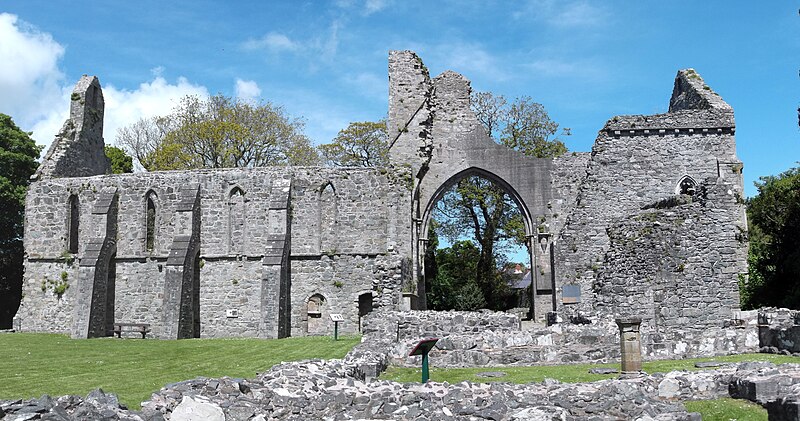The village of Greyabbey is named after the 12th
century abbey on its outskirts. The
abbey was founded by Affreca, the wife of the Anglo-Norman invader of East
Ulster John de Courcy. The abbey is now
a ruin, but stands in beautiful surroundings set among the parkland and gardens
surrounding Grey Abbey House. The House
is one of the finest Georgian country houses in Ireland, and belongs to the
Montgomery family. The gardens include a
wide variety of plants, including many from the Southern Hemisphere. The property has been used several times for
filming, including The Frankenstein Chronicles starring Sean Bean.
Kircubbin lies about halfway down the eastern shore of
Strangford Lough. The main activity in
the village is fishing and boating for leisure.
The Kircubbin Sailing Club has been active since the early 20th
century. At this point the Mourne
Mountains are still visible, a tantalising sight rising up from the far side of
the Lough.
 |
| GreyAbbey. Photo by JohnArmagh, via Wikimedia Commons. |
